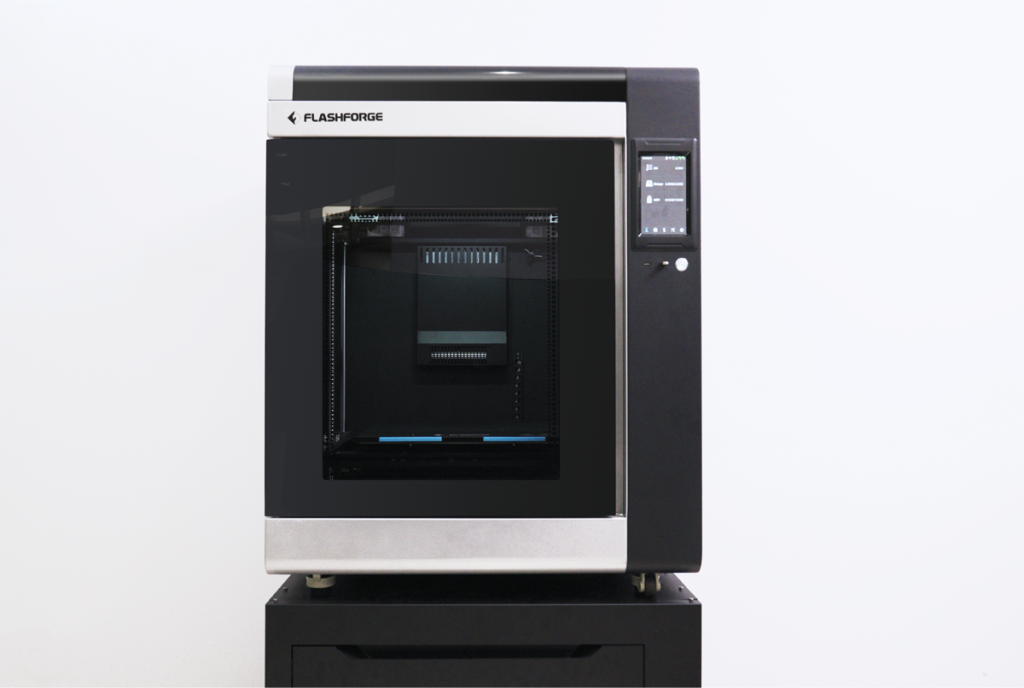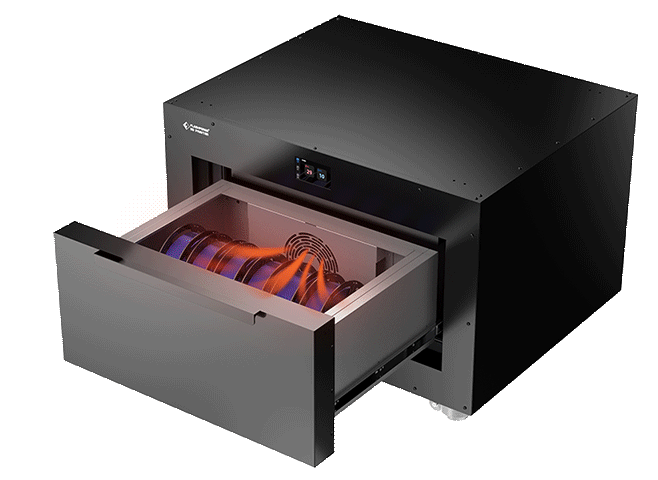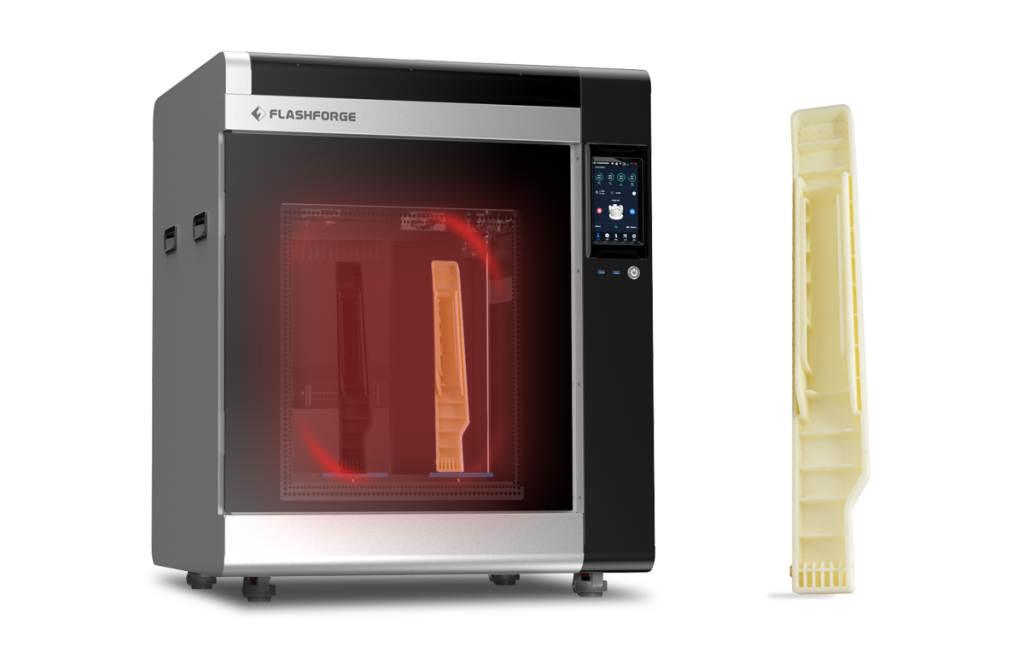Over the past few months, 3D printer manufacturer FlashForge USA has started positioning itself toward the commercial-grade market space.
The move was largely initiated by the launch of the Creator 4 3D printer back in October 2021, but there’s also been a notable shift in the target applications of the company’s customer base.
According to FlashForge USA, the pioneering 3D printer has already seen some very impressive adoption rates for a wide variety of commercial production applications in sectors such as consumer goods, healthcare, electronics, furniture, and manufacturing tooling. This is in stark contrast to the company’s original target markets, which comprised hobbyists, educational institutions, and prosumers.
Of course, this doesn’t mean FlashForge USA is running away from its original verticals at all, as the firm continues to offer its full range of consumer and mid-range 3D printers too.

The ever-evolving FlashForge portfolio
Founded in 2011, FlashForge is one of the more experienced OEMs in the desktop 3D printing sphere. The company established its US-based subsidiary, FlashForge USA, in 2013, offering its FDM machines to homes, print farms, design studios, and educational institutions the world over.
Until now, the firm’s existing portfolio has comprised accessibility-focused machines like the Adventurer 3 and Adventurer 4, as well as mid-range dual-extrusion 3D printers like the Creator Max, Creator Max 2, and Creator 3 Pro.
The year 2021 brought with it the addition of the professional and commercial verticals, with the Creator 4 now taking the limelight as FlashForge USA’s flagship 3D printer. The machine is now the highest-performance offering in the company’s lineup, featuring an IIDEX (Interchangeable Independent Dual Extruder System) setup with a sizable 400 x 350 x 500mm build volume.
To complement the Creator 4, FlashForge has even launched its own Filament Humidor Cabinet. In a bid to address the ever-more demanding needs of users, the add-on is designed to guarantee commercial-grade part quality, enabling customers to easily store moisture-sensitive filaments to keep them in tip-top shape at all times. The station ultimately helps manufacturers to avoid product defects and keep their material costs as low as possible, which are crucial in an enterprise environment.

A pleasant surprise
The Creator 4 certainly came packaged with a whole host of new applications, but one of the more unexpected ones turned out to be custom 3D printed furniture.
The furniture industry typically makes use of molding and cutting technologies, but these unfortunately don’t lend themselves to customization or design flexibility. FlashForge claims that consumers are increasingly turning away from this conventional model toward more individualized furniture pieces that can be fine-tuned to their unique tastes.
Recently, FlashForge helped an unnamed furniture manufacturer optimize its production processes via 3D printing. Mr. Lee, R&D Director of the organization, said, “With market competition getting increasingly severe, our success depends on whether we can get better products to market at a shorter time and lower cost. Earlier this year, we integrated 3D printing into the prototyping stage. This brought us many more benefits than we expected.”
The company claims to have slashed its prototyping cycle times from ten days to just three days, while also significantly cutting costs and enabling the use of more diverse polymers like ABS and PLA-CF.
Ultimately, the case study is just one of many demonstrating how FlashForge USA is already reaping the fruits of the commercial-grade market.

Subscribe to the 3D Printing Industry newsletter for the latest news in additive manufacturing. You can also stay connected by following us on Twitter, liking us on Facebook, and tuning into the 3D Printing Industry YouTube Channel.
Looking for a career in additive manufacturing? Visit 3D Printing Jobs for a selection of roles in the industry.
Featured image shows the Flashforge Creator 4. Photo via Flashforge.



